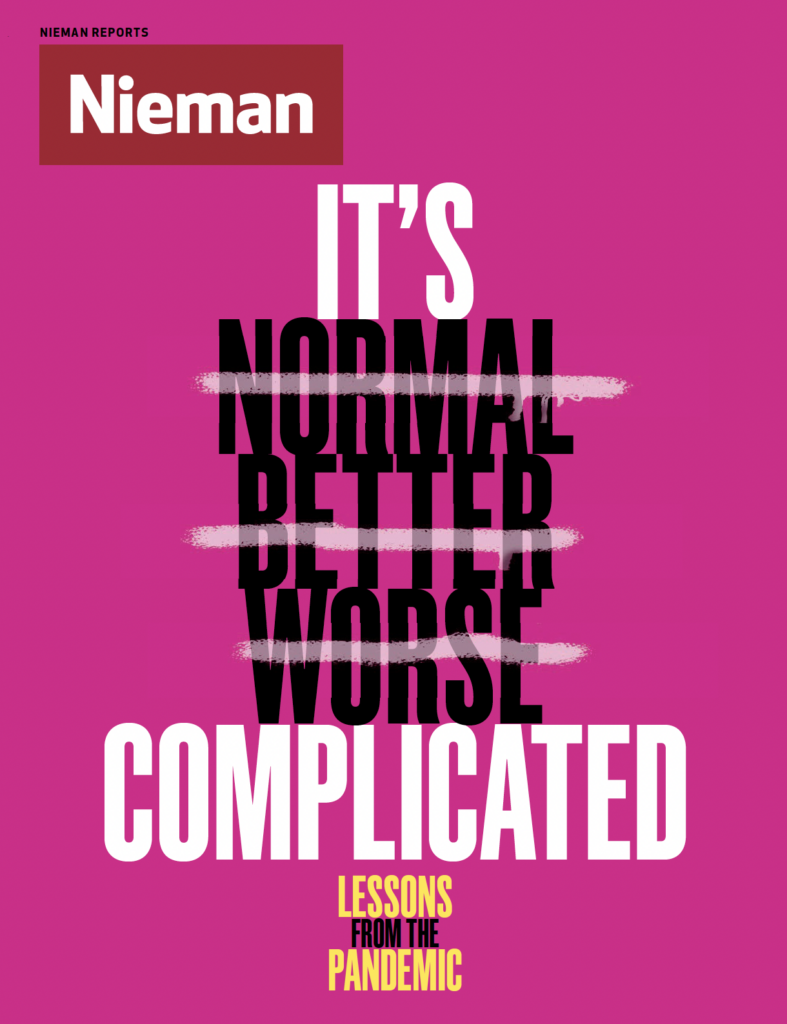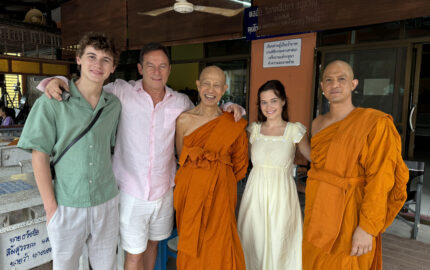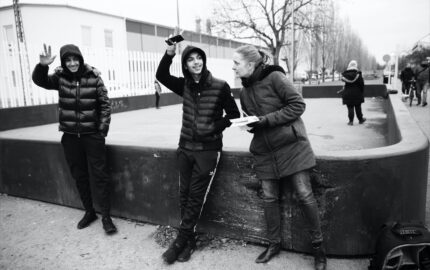
Hope that the coronavirus is finally being brought under control has prompted plans for a return to “normal.” But can, or should, journalism return to a pre-pandemic “normal?” Across newsrooms, the way we once covered education, sports, food, politics — any beat — is unlikely to be sufficient for the new moment we are entering.
What are the lasting lessons of this time? And how should we do journalism differently moving forward? These are the questions Nieman Reports explores in our essay series, Lessons from the Pandemic.
I’d never thought about writing for teenagers. The subject matter of my work doesn’t exactly lend itself to a young audience — or so I assumed. In my two decades of covering the Middle East, North Africa, and South Asia, I’ve focused on conflicts, human rights abuses, political upheaval, women’s rights (or the lack of), and other difficult issues. And so, when an editor at Scholastic asked me if I’d consider adapting my first book, “No Turning Back: Life, Loss, and Hope in Wartime Syria,” for a young adult audience, my initial reaction was to say no, not because it isn’t an important story — it’s crucial — but because I wondered how on earth I was going to tell young people a story that many adults turned away from.
The Syrian conflict is devastating and complicated. It is often difficult for adults to understand, let alone young people. Now a decade old, the revolution-turned-war has claimed at least 500,000 lives and displaced half of the country’s population of 23 million. The figures are numbing, but every statistic is a person, every person a member of a family, every family integral to a community, every community part of a country. This is the ripple effect of war.
I wanted to focus on those ripple effects, but how to do it for a young audience? I thought back to the time when I was in school and some of the books I’d read and been assigned. I’d forgotten most of them. The books that stuck with me, the ones I carried with me into adulthood, were books like Anne Frank’s “The Diary of a Young Girl,” which showed me the horrors of war and Nazism through the lived experiences of Anne and her family. And I remembered that there is a way to tell difficult stories to young people without talking down to them, or traumatizing them. I accepted Scholastic’s offer.
“Sisters of the War. Two Remarkable True Stories of Survival and Hope in Syria,” was published in September 2020. It tells the stories of two sets of sisters who find themselves on opposite sides of the war. The sisters appear in “No Turning Back,” but their stories are afforded more space, depth, and background in the young adult adaptation. Some of the language is simplified and terms such as Al-Qaeda, socialism, and 9/11 are explained rather than assumed knowledge. An epilogue also updates readers on where the girls are now, and how they are doing.
I knew from the outset that I wanted the protagonists to be about the same age as the readers because I didn’t want young people to feel lectured to by an adult, but to perhaps recognize parts of themselves in Damascus-based Hanin and Jawa, and in Ruha and Alaa in Idlib province. It is not often, or not often enough, that we see war and upheaval through the eyes of children, but I think it’s a critical perspective, because the children are there; they are seeing it, hearing it, feeling it, trying to understand it — and they shouldn’t be ignored.
I don’t have children, but I have two teenage nieces whom I kept in mind while navigating the hair’s width between conveying an often-violent reality and gratuitous details. I wrote a book that I’d not only allow my nieces to read, but that I wanted them to read.
The story is dark in places — I don’t believe in sanitizing reality because it is a disservice and dishonest to somebody’s lived experience — but teenage readers will also hopefully come away from the story uplifted by these brave girls, and inspired to think, "If these girls overcame all of that, then I can face my problems too."
It’s a story set in Syria, but it also transcends borders. At a time of great division, when differences are magnified and feared, and refugees and foreigners are demonized by some, the stories of these girls will hopefully remind readers that young people everywhere are not so very different, and that any differences aren’t frightening. The similarities between all four Syrian girls, in age and attitude, also illustrates this — it is the adults around them who brand other Syrians as enemies.
Since its publication, I’ve heard from a number of young readers (and their parents) who have emailed to say that the book has sparked conversations about these and other issues. I am grateful and humbled by such feedback. As a journalist and an author, there’s nothing more that I could hope for.



